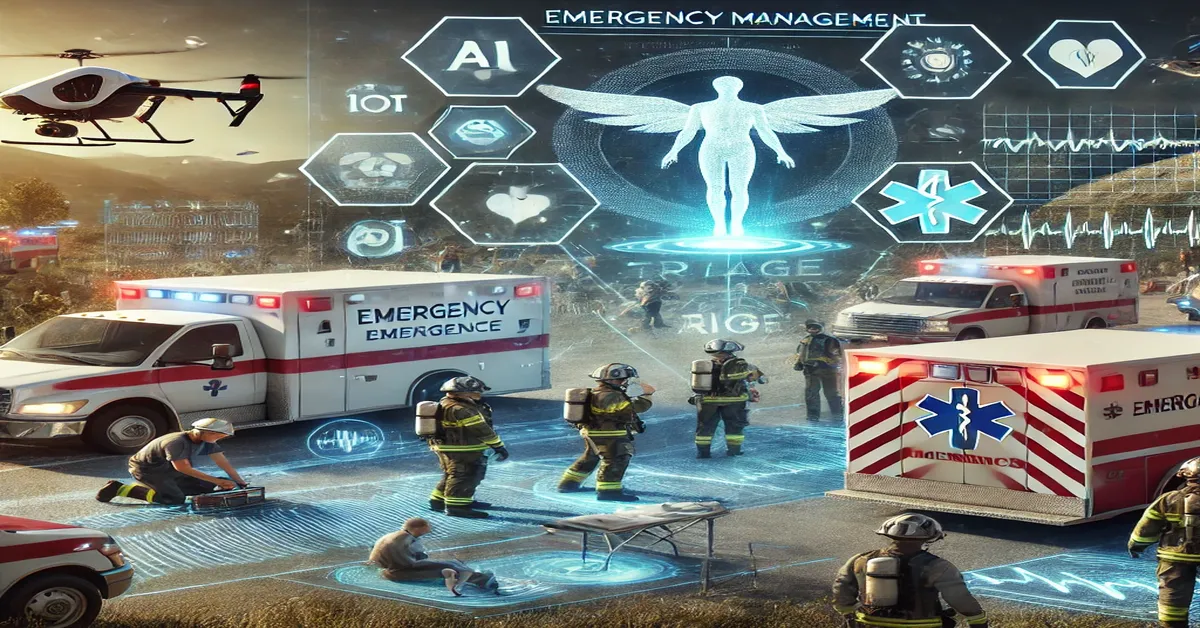Modern AI has knowledge that can make the difference between life and death through a quick, informed decision. AI technology is having a massive impact on this by offering real-time information, improved triage processes, and more accurate predictions.
AI tools help emergency response teams deal with critical situations better. It’s time to see how various technologies are changing the future of emergency response. We will also discuss how conversational AI in healthcare makes a real difference.
AI-Powered Triage Systems
Emergency response cannot be separated from triage. Historically, first responders and medical staff base their decisions on caring for a patient on experience and predefined procedures. Yet, AI-powered triage systems are now providing additional decision-making support.
These systems process enormous amounts of patient data — from vital signs and symptoms to medical history — and help responders immediately decide how life-threatening or not a patient’s condition is during an emergency.
However, the conventional approaches, in turn, are really skilled at providing more accurate and faster assessments than AI systems. As a result, patients are less likely to be under or over-triaged, having both too little attention paid to them and too much.
AI using machine learning can predict the outcomes of patients more accurately so that in times of emergency, the emergency personnel can concentrate on the high-risk patients. The result? Treating people who need it the fastest and the best.
Additionally, these tools standardize the triage process between teams and departments, providing consistent care anywhere with no sum of responder experience or subjectivity. This level of standardization ensures that every patient not only gets appropriate care but does so wherever and whenever an emergency should occur.
Real-Time Information and Analysis
Real-time information, often required for lifesaving interventions, is commonly unavailable when needed. AI can greatly improve this by providing real-time data analysis with situational awareness. AI can be used with predictive analytics to analyze past data and current trends to see if an emergency will happen before it happens, and teams can then prepare.
Importantly, AI can combine data from different sources, including IoT devices, sensors, and even patient wearables. This integration gives responders a complete picture of the emergency situation on the ground.
For example, this increased situational awareness helps different agencies work more efficiently together to coordinate when action is needed rather than creating confusion during times of critical need.
The next important element is automated call handling. Natural language processing equipped in AI systems allows emergency calls to be easily categorized and prioritized, such as improving the speed of deployment in critical situations with automation.
Faster, More Accurate Interventions
Emergency care needs speed and accuracy, and we are seeing it applied worldwide in areas of care where AI is proving to be a game changer. Real-time treatment recommendations are made possible simply because AI can analyze patient data and compare it with hundreds of thousands of similar cases.
This has proven invaluable in time-sensitive situations, with seconds to save lives. For instance, AI-based systems can assist paramedics or ER staff in speedily deciding whether the patient requires instant surgery or specialized care or if they may stabilize.
In fact, AI is also better at optimizing resource reallocation during emergencies. These systems reconstruct real-time data and predict the best deployment of personnel, vehicles, and medical equipment. This results in more efficient care because the right resources get to the right locations faster.
A conversational AI in healthcare platforms can further enhance this process by coordinating communication between medical professionals and emergency teams, ensuring everyone can access the same vital information.
Second, faster interventions result from AI’s continued ability to build predictive models. These models can also predict when a patient is likely to need hospitalization, intensive care, or specialized treatment. This foresight gives emergency response teams time to develop plans in advance and allocate resources where they are most needed.
Conclusion
Integrating AI tools into emergency response opens up new ways to provide faster, more accurate, and more efficient care. AI-enabled triage systems help decision-making using real-time data analysis to enhance situational awareness; these technologies transform how emergency troops work.
AI is helping save lives and optimizing resource use by providing faster and more accurate interventions, all while setting the stage for the future of emergency medical services. Finally, as AI further evolves, we will see its contribution to emergency response become increasingly critical, providing responders and healthcare providers with additional capabilities.







